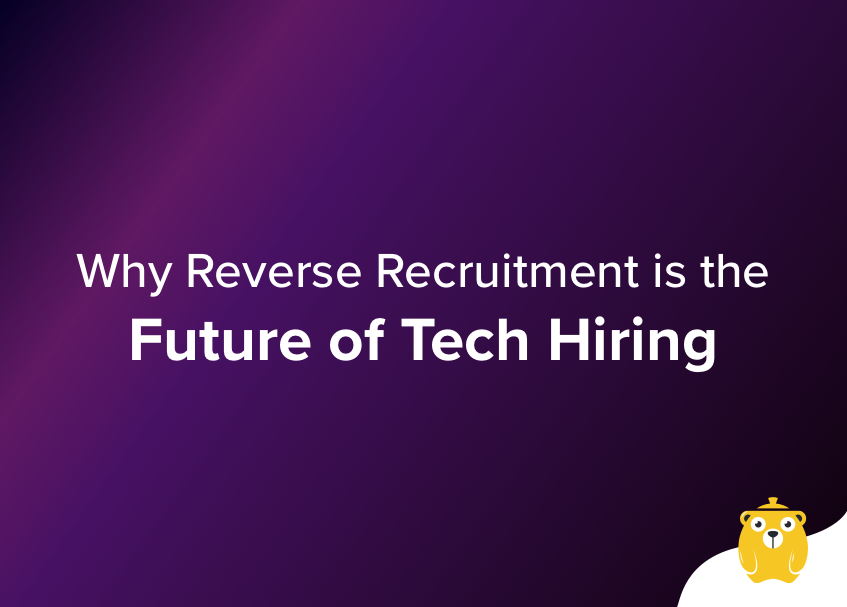Unlock the Power of Reverse Recruiting Techniques for Effective Skill Purchase
In the world of skill acquisition, the landscape is regularly progressing, with new methods arising to fulfill the demands of a competitive market. Amongst these techniques, reverse recruiting stands apart as a method that turns the conventional employment procedure on its head, positioning the power in the hands of the candidates. By tempting leading ability to seek opportunities within your company, reverse recruiting uses a fresh approach to attracting and retaining key personnel. As companies aim to stay in advance in the skill game, unlocking the possibility of reverse recruiting techniques could be the trick to protecting a solid and dynamic workforce.
Recognizing Reverse Recruiting
Recognizing reverse recruiting is critical in browsing the evolving landscape of talent acquisition strategies. Unlike traditional employment approaches where companies look for candidates, reverse recruiting involves the proactive method of candidates choosing potential companies. This paradigm shift places prospects in the chauffeur's seat, allowing them to pick firms that straighten with their worths, occupation objectives, and job choices.
Basically, reverse recruiting equips prospects to take control of their task search process by investigating business, connecting to employers or employing supervisors directly, and showcasing their skills and experiences. For employers, this strategy offers a special chance to bring in leading ability who are really thinking about the firm and its mission, promoting an extra involved and dedicated labor force.
Advantages of Reverse Hiring
Using reverse recruiting approaches can yield significant benefits for both prospects and companies in the ability purchase procedure. By being come close to by companies that have currently determined them as potential fits for their company, prospects can feel more valued and sought after.
Additionally, reverse recruiting can assist firms separate themselves in a competitive talent market by showcasing a proactive and forward-thinking technique to recruitment. Inevitably, the benefits of reverse recruiting extend to both prospects and companies by streamlining the working with procedure and fostering even more purposeful links between the 2 parties.

Implementing Reverse Hiring Methods
To properly integrate reverse recruiting methods into a skill acquisition approach, organizations have to prioritize aggressive engagement with potential candidates. This entails recognizing top ability within the sector and establishing connections with them before an actual job opening up arises. One key tactic is to leverage social media systems to get in touch with easy candidates who might not be proactively seeking new opportunities. By showcasing the firm society, worths, and career growth chances, organizations can pique the passion of prospective prospects and develop a talent pipeline for future requirements.
In addition, carrying out customized interaction methods can also improve the performance of reverse recruiting. Tailoring messages to specific candidates based upon their skills, experiences, and occupation aspirations shows a genuine rate of interest in their potential fit within the organization. In addition, organizing networking occasions, webinars, or workshops can provide important touchpoints for engaging with prospective prospects in a more interactive and individual fashion. By regularly supporting partnerships with leading talent, companies can stay in advance in the affordable talent purchase landscape and secure the most effective prospects for their group.
Leveraging Modern Technology in Reverse Recruiting
In the digital age of talent purchase, utilizing technological advancements is vital more helpful hints for effective implementation of reverse recruiting techniques. Leveraging modern technology backwards recruiting uses countless advantages to simplify the procedure and bring in leading ability effectively. Applicant monitoring systems (ATS) play an important function in handling candidate data, tracking interactions, and automating interaction, enabling recruiters to focus on building relationships with possible hires.
Making use of data analytics devices can help recruiters gauge the effectiveness of their reverse recruiting strategies, recognize areas for enhancement, and make data-driven choices to enhance the ability acquisition process - reverse recruiting. By accepting technology in reverse recruiting, organizations can remain in advance in the competitive skill market pop over here and safe and secure top skill efficiently.
Determining Success backwards Hiring
Having established the fundamental duty of modern technology in optimizing reverse recruiting methods, the following vital action lies in successfully measuring the success of these ingenious strategies. In the realm of reverse recruiting, standard metrics like time-to-fill and cost-per-hire might not totally record the impact of these techniques. Instead, gauging success backwards recruiting calls for an extra nuanced approach that concentrates on candidate interaction, company branding improvement, and lasting talent retention.
One secret statistics to take into consideration is candidate experience. By gathering responses from prospects that have actually experienced the reverse recruiting procedure, organizations can acquire beneficial understandings right into locations for enhancement and determine staminas to take advantage of. Additionally, tracking metrics associated with employer brand perception, such as social media sentiment and Glassdoor reviews, can provide an extra holistic view of how reverse recruiting is forming the company's online reputation in the ability market.
Inevitably, success backwards recruiting need to be gauged not just by the performance of filling up roles but additionally by the top quality of hires, their positioning with organizational culture, and their lasting efficiency within the business. By adopting a comprehensive strategy to determining success, organizations can really open the capacity of reverse recruiting techniques for successful talent procurement.
Conclusion

Comments on “Reverse Recruiting: A Fresh Approach to Talent Acquisition”